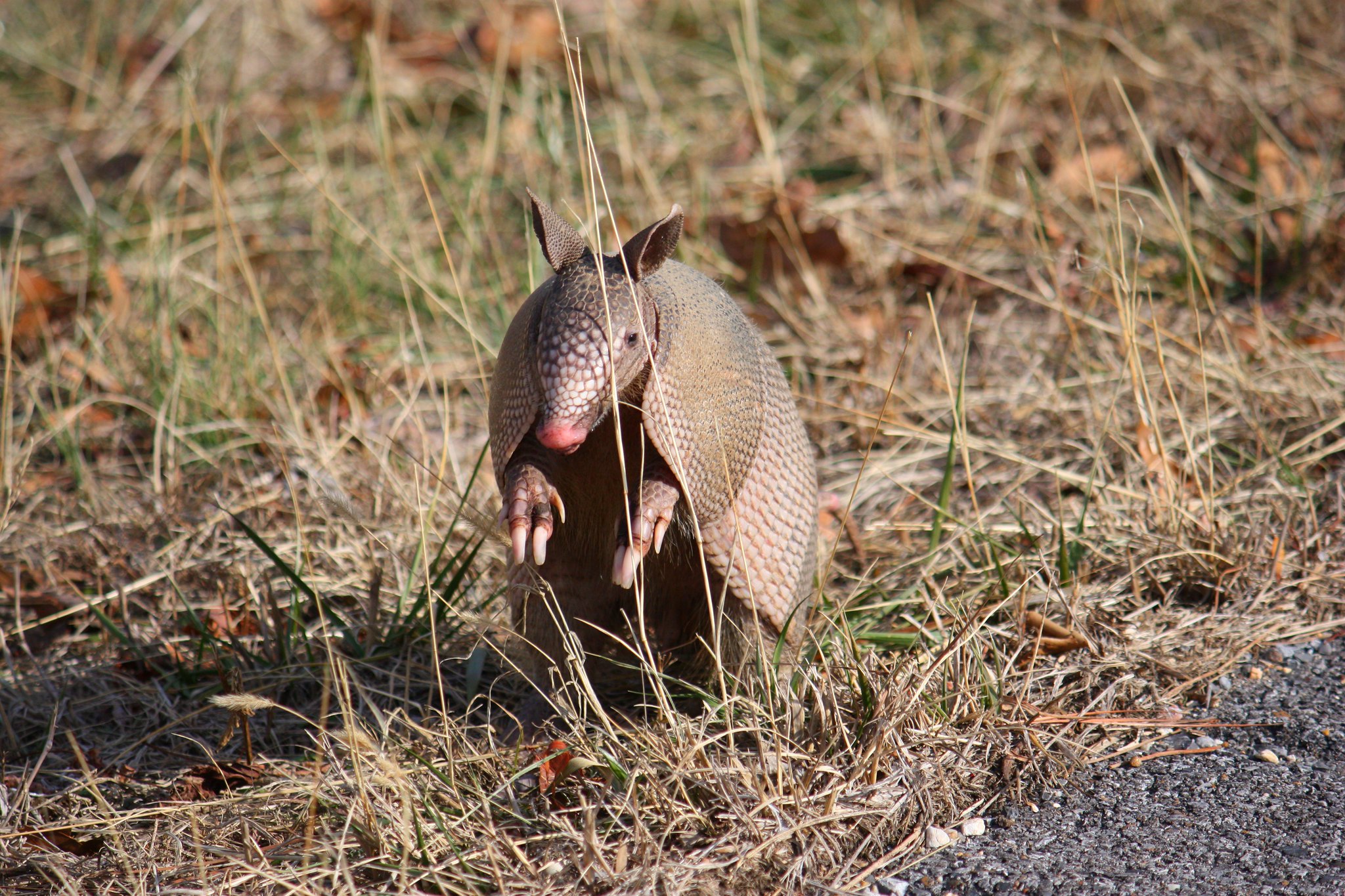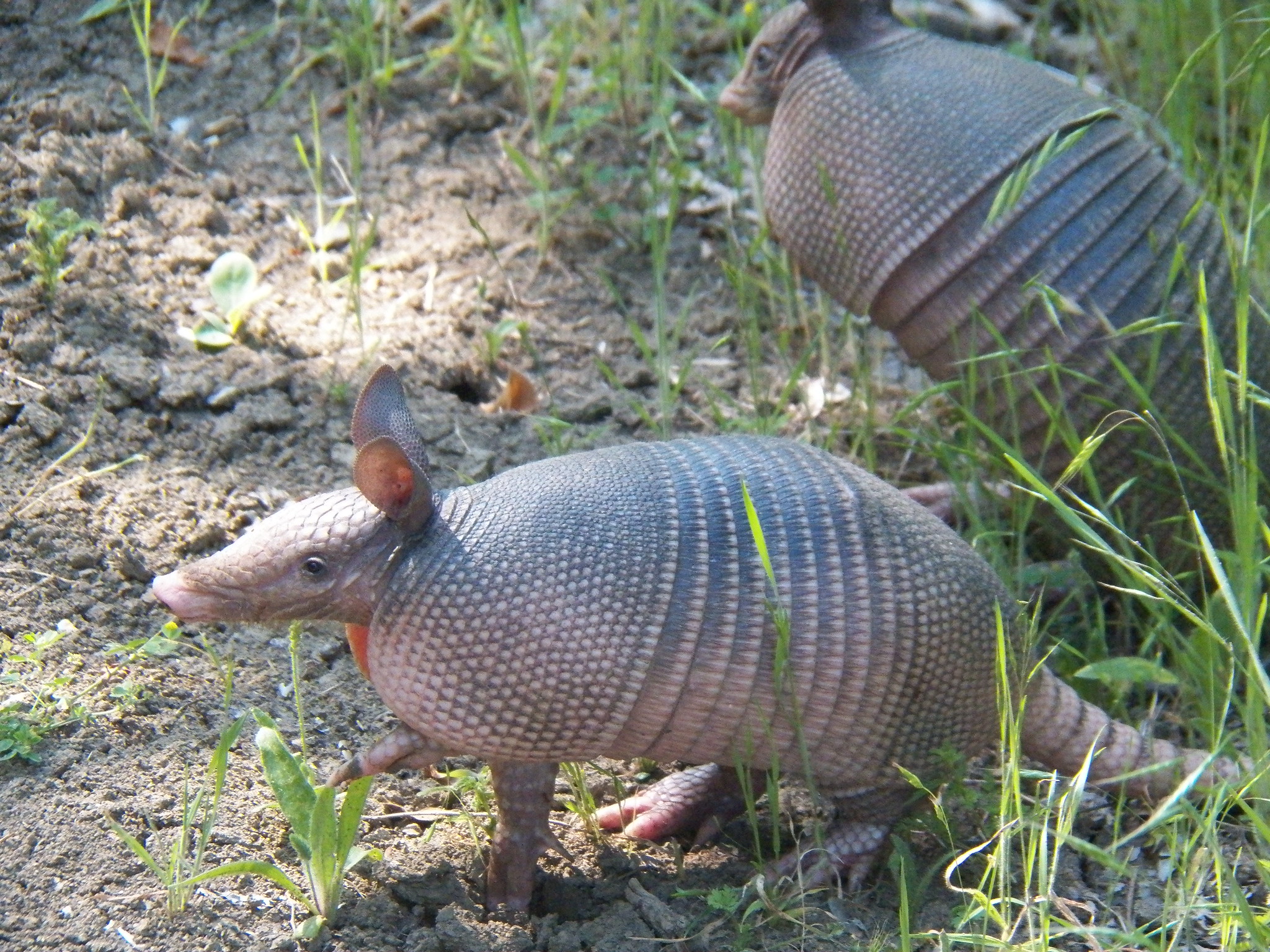“While we typically associate them with the southwestern United States, because of temperature increases they’ve been able to expand their territories to include more northern and eastern states. The N.C. Commission has reported sightings of the armadillos in 27 counties, including Mecklenburg.”
A photo of a nine-banded armadillo taken by Flickr user Between the Lakes
It’s a rabbit. No-it’s a pig. No - it’s...it’s...an armadillo?
That’s right, the Carolinas are currently in the midst of a slow motion invasion by these four-legged strangers in armor, and the N.C. Wildlife Resources Commission needs your help to track their whereabouts.
Native to Central and South America, the National Wildlife Federation states that due to climate change, nine-banded armadillos have been expanding their territories for at least the last 100 years. While we typically associate them with the southwestern United States, because of temperature increases they’ve been able to expand their territories to include more northern and eastern states. The N.C. Commission has reported sightings of the armadillos in 27 counties, including Mecklenburg.
One of twenty different species of armadillo, the nine-band is the only species native to the United States and is named for the nine fashionable bands that run across its midsection. In Spanish, the term armadillo translates to “little armored one”, an obvious reference to these striking armored plates covering their back, head, legs, and tail.
In the Aztec language, their name translates to the fitting description “turtle-rabbit”, probably because of their pointy ears and shell. However, if we were to name them today, we might call the nine-banded armadillo “turtle-pig”. Their snout and size resembles that of a small pig, and they are known to grunt while they forage for food. They eat insects, small reptiles and amphibians, bird eggs, and sometimes plants. An adult typically weighs about 12 lbs and is about 2.5 feet long. They are primarily nocturnal.
A photo of a nine-banded armadillo taken by Flickr user Robert Nunnally
Most of what we think we know about armadillos is actually wrong. Only one species of armadillo, the Brazilian three-banded armadillo, is able to roll itself into a ball. It’s true that armadillos are the only other animal besides human that can contract leprosy, but cases of it being transmitted between armadillos is rare. That mostly only happens on episodes of House.
Even though they don’t turn themselves into animal bowling balls, nine-banded armadillos do have their own unique traits. They almost always give birth to quadruplets: four identical offspring. When startled, they jump straight into the air, making them a danger on roadways and giving them the less than affectionate title of “hillbilly speed bump”.
If you do see an armadillo, the N.C. Wildlife Resources Commission wants you to report on its whereabouts by snapping a picture and uploading it to the free online platform, iNaturalist. You can do so by visiting iNaturalist.org or by downloading the free app. Alternatively, you can also send your photo, the armadillo’s location, and the date and time you saw it to armadillo@ncwildlife.org.


